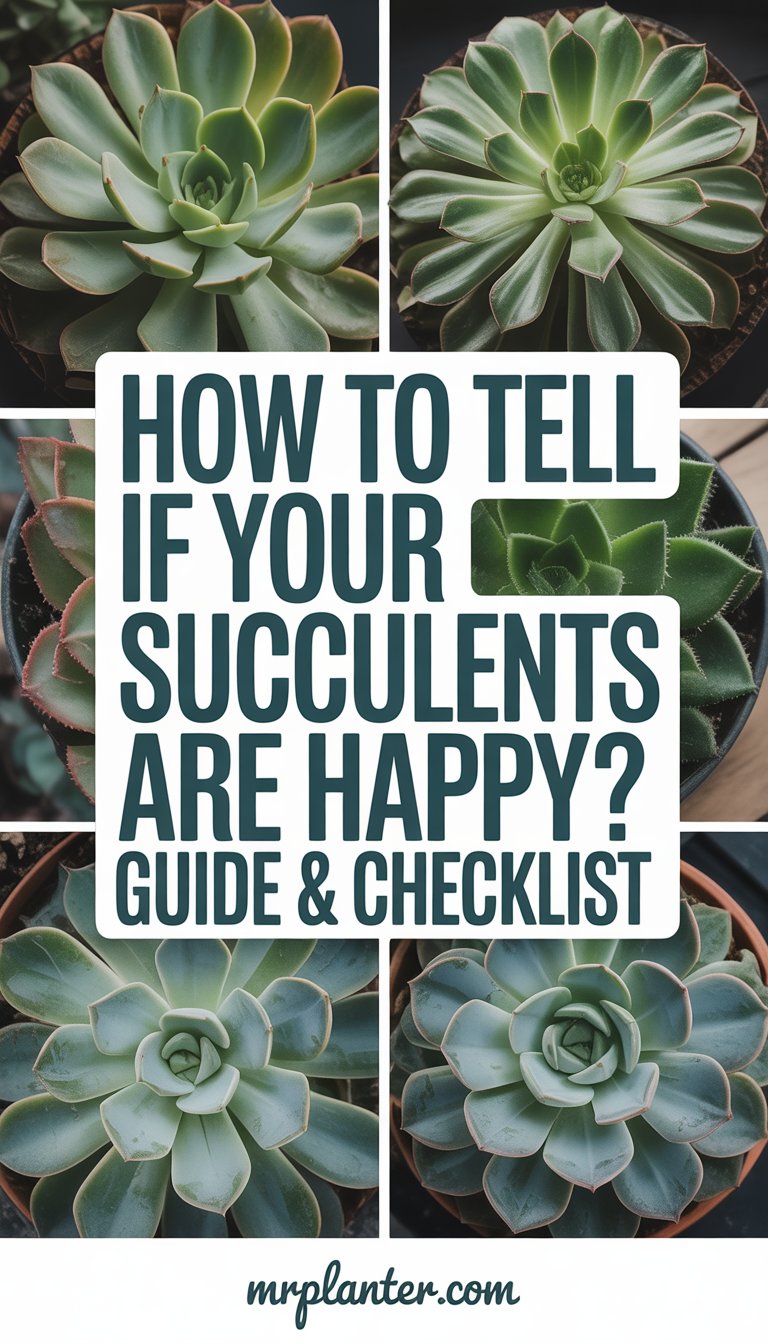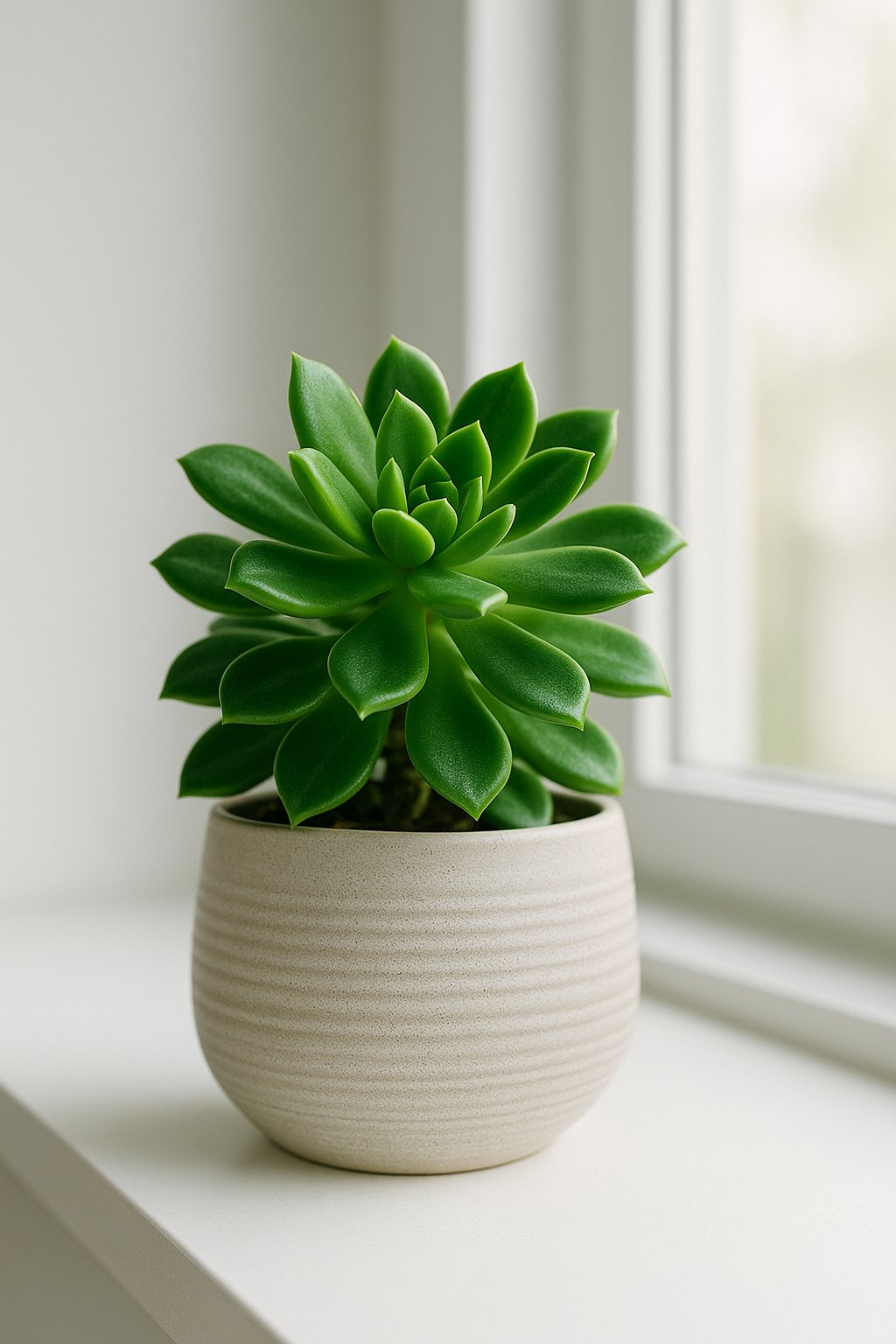Wondering if your succulents are truly thriving? This definitive guide reveals the subtle (and not-so-subtle) signs of happy, healthy succulents—plus expert tips to keep them flourishing, based on the latest horticultural research and real-world grower experience.
Interactive Checklist: Is Your Succulent Happy?
🌱 Interactive Checklist: Is Your Succulent Happy?
Score:
- 6-7: Your succulent is thriving!
- 4-5: Good, but check care routine.
- 0-3: Time to adjust care—see tips below.

Quick Reference Table: Signs of Happy Succulents
| Sign | What It Means | What to Do Next |
|---|---|---|
| Firm, plump leaves | Well-hydrated, healthy growth | Maintain current care |
| Vibrant, rich color | Optimal light and nutrition | Keep up light exposure |
| New leaf or stem growth | Active, healthy plant | Celebrate! |
| No brown spots or scars | Disease- and pest-free | Regularly inspect plant |
| Roots fill the pot, not rot | Strong root system | Consider gentle repotting |
| Upright, compact shape | Proper light, not “stretching” | Rotate for even growth |
| No pests or sticky residue | Healthy, pest-free environment | Monitor and maintain |
Top 7 Signs Your Succulent Is Happy

1. Plump, Firm Leaves
Healthy succulents store water in their leaves. If your plant’s leaves are plump and firm to the touch, it’s a clear sign it’s well-hydrated and content.
Wrinkled or mushy leaves often indicate under- or overwatering.
2. Vibrant, Consistent Color
A happy succulent displays vibrant, saturated color—whether that’s lush green, deep red, or even blue, depending on the species.
Some color changes are natural, especially in response to light, but faded or yellowing leaves may signal distress. Rich, even hues are a hallmark of health.
3. Active New Growth
Look for new leaves, offshoots, or flower buds. This is a direct indicator that your succulent is thriving and has all it needs to grow.
4. No Brown Spots, Scars, or Pests
Healthy succulents are free from brown or black spots, scars, or visible pests.
Check the underside of leaves and the soil surface for any signs of trouble.
5. Compact, Upright Shape
If your succulent is growing tall and stretched, it’s likely reaching for more light—a sign it’s not as happy as it could be.
Compact, symmetrical growth means your plant is getting enough sun.
6. Healthy Roots
When repotting, check for white, firm roots that fill the pot without being mushy or rotten. Healthy roots mean a strong foundation.
7. No Sticky Residue or Webbing
Sticky leaves or fine webbing can indicate pests like aphids or spider mites. A happy succulent is pest-free and doesn’t have any sticky or powdery residue.
Common Misconceptions
- Red or Pink Tips = Stress?
Not always! Many succulents naturally develop red, pink, or purple tips when exposed to bright light—a sign of health, not distress. - Leaf Drop Always Means Trouble?
Occasional lower leaf drop is normal as plants grow. Only worry if the upper leaves start falling or the plant looks bare. - All Color Changes Are Bad?
Some succulents change color seasonally or in response to the sun. Watch for dullness or yellowing, which can signal problems.
Expert Tips for Keeping Succulents Happy
1. Light Matters Most
- Provide at least 6 hours of bright, indirect sunlight daily.
- Rotate your plant weekly for even growth.
2. Water Wisely
- Water deeply but infrequently—let the soil dry out between waterings.
- Use a well-draining soil mix.
3. Proper Potting
- Choose pots with drainage holes.
- Repot every 1-2 years to refresh the soil and check the roots.
4. Monitor for Pests
- Inspect leaves and soil regularly.
- Isolate new plants before adding them to your collection.
5. Feed Sparingly
- Fertilize only during active growth (spring/summer) with a diluted, balanced fertilizer.
6. Seasonal Adjustments
- Reduce watering in winter when growth slows.
- Increase humidity slightly if your home is very dry, but avoid misting leaves directly.
FAQ
Q: My succulent’s leaves are turning yellow. What’s wrong?
A: Yellowing often signals overwatering or poor drainage. Allow soil to dry completely before watering again.
Q: Can succulents be happy indoors?
A: Absolutely! Just ensure they get enough light—consider a grow light if natural sunlight is limited.
Q: How do I know if my succulent needs repotting?
A: If roots are circling the pot or growing out the drainage holes, it’s time to repot.
Conclusion
Happy succulents are easy to spot when you know what to look for: plump leaves, vibrant color, compact growth, and steady new shoots.
By tuning into these signals and following the expert care tips above, you’ll keep your succulents thriving for years to come.
Ready to grow your happiest succulents yet? Download our free printable care checklist and join our community for more expert tips!

